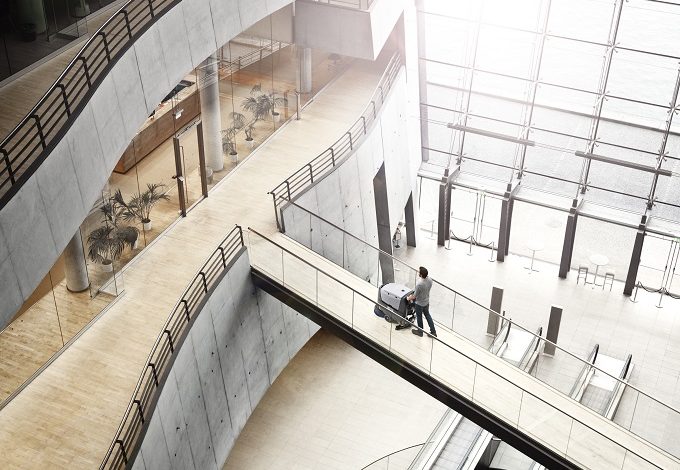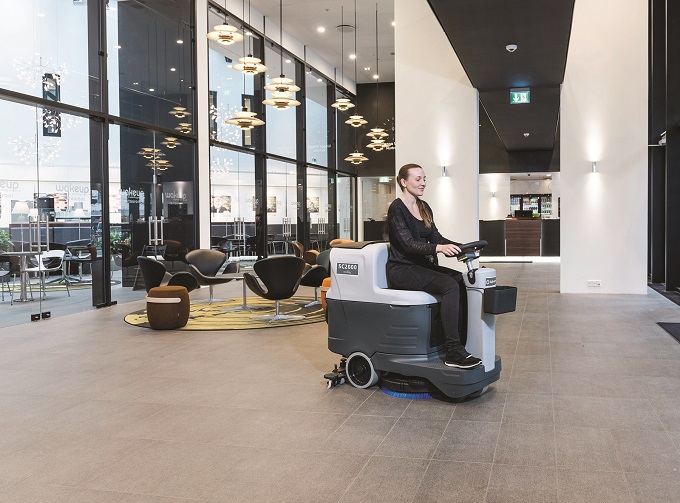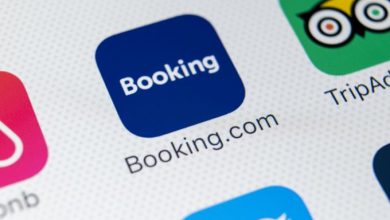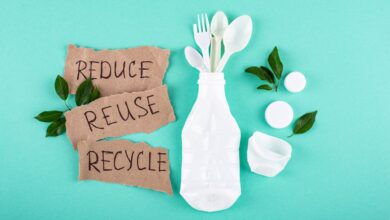
Forget mops and elbow grease and the traditional spray and wipe…
Hotel and resort cleaning has moved with the times and is embracing new technology as quickly as it arrives.
Even before the tentacles of COVID-19 reached into every corner and crevice of the world, hotels had begun waging a ‘smart’ war to ensure the highest standards of cleanliness.
One of the frontline weapons in the fight for hotel hygiene is the electrostatic spray gun; a large handheld device that shoots a spray of disinfectant onto almost everything that a hotel customer might touch.
The frequent blasts of disinfectant reassure guests that any germs are blown away.
The electrostatic application causes droplets of both the disinfectant and antimicrobial cleaner to produce a fine mist that wraps around all surfaces and coats it in a way that human hands simply cannot touch. The droplets are said to cling to a surface with a force that is 75 times stronger than the pull of the Earth’s gravity.
The electrostatic sprayers overcome any of the issues associated with the traditional spray and wipe method; namely time, overuse of the chemical and possible cross-contamination.
And no matter what angle cleaners disinfect a surface from, the disinfectant clings to the entire surface and does not need wiping off.
The Electrostatic sprayers take about 70 percent less time than conventional spray and wipe and uses 65 percent less chemical.

A number of hotels also use ultra-violet light for the sanitisation of smartphones and tablets shared by hotel employees. It has been used for decades as a powerful, rapid and chemical-free disinfection method. The UV light emitted deactivates the DNA of viruses, bacteria, and fungi, destroying their ability to multiply and cause disease.
Rochak Karki, the Executive Housekeeper of Sydney’s InterContinental Hotel, says his team uses electrostatic sprayers in their 509 guest rooms to do deep cleaning, “providing at extra sense of safety for our guests”.
“We are very thorough with the cleaning of all high-touchpoint areas, light switches, remote controls, all the chrome fittings, fan switches, door handles, bedside tables, kettles and hair dryers,” Mr Karki said.
“The electrostatic sprayers have become essential pieces of equipment for hotel cleaning. We also use them for deep cleaning five to six times a day in public areas, including lift buttons, chairs in cafes and the front desk.”
Mr Karki said his staff go through “an extensive check list for rooms and all public areas, lifts, lobbies, stairwells etc,” based on the InterContinental Hotels Group’s 5-S Ways of Clean.
“All the chemicals we use are TGA approved and made for the COVID cleaning purpose,” he said.
His staff use commercial scrubbers and buffers for the hotel’s marble floors.
“High speed commercial scrubbers are the only way to go in a large hotel,” Mr Karki said. “We use battery-operated scrubbers, so chords do not become tangled – that is safer for everyone – and we use a gas-powered, very high-speed buffer which is very effective.
“Using the scrubber and buffer are by far the most efficient and effective ways to keep the marble floors clean and polished. To sanitize them we use disinfectant in our scrubber.”
Mr Karki said his cleaners used white pads in the scrubber on marble surfaces because it was favourable to the stone tiles but used brown and black pads in pool areas which had granite surrounds.
The hotel’s vacuum cleaners used in rooms operated off mains power.
Colour-coded microfibre cloths were used in different areas of the hotel and were always single use.
“At the end of the day they are all collected by the room attendants and brought down for washing and they are disinfected for the next day,” he said.
Technology continues to bring about change in the accommodation sector.
Some hotels are also looking at nano technology to create a stay clean film on objects it is applied to. Whether that is to keep mirrors shiny, shower screens grime free or sinks and toilets squeaky clean; the nano technology film reduces routine cleaning times and eliminates the need for expensive cleaning agents to tackle tough stains.
Robots have also been pitched to hotels as a novelty to welcome guests as they arrive.
But the best use of robots is to help clean the miles of floors in a hotel. Robot vacuum cleaners are available for commercial use and can be left to finish up a room by housekeepers when they move on to the next room.
They can also clean public spaces.
Robot vacuum cleaners save housekeepers time and are programmed to be diligent.
They will clean under the bed every time and brush up the carpet whether it is dirty or not.
Industry perspectives on cleaning floors with scrubbers and polishers…
Damon Couper, Capital Equipment Hire, says:
“Cleaning equipment is necessary to maintain a high standard of cleanliness, hygiene and the professional image required for guest-based venues, especially in today’s climate.
“Like all capital equipment purchases it is important to understand the current technology on offer, the suitability to your application and requirement. Prior to purchasing, always consider the size of the area and time allocated to clean. Type of floor surface, different surfaces require different cleaning methods, i.e., correct choice of brush/pad to gain the best performance. Also consider the type of common stains to ensure the most suitable cleaning agent is used.
“The correct machine configuration is needed for simple, effective cleaning and to gain the most from your scrubber dryer. It is vital to partner with a supplier that can provide the latest technology along with a focus on providing responsive after sales support that can be relied on throughout the machine’s lifecycle.”
What are the latest innovations in brush technology?
“Most machines available today have a large selection of pads and brush types. These optional brushes/pads provide different cleaning performance and are suited for various floor types. Orbital technology has been recently introduced on some models, an oscillation action, which provides excellent cleaning.”
What about power?
“Over the past couple of years, most manufacturers are offering machines powered by Lithium-ion batteries. The benefits offered are the size and light weight of the battery power pack and the ability to recharge in a reduced time with extended life expectancy. The introduction of Lithium-ion batteries allows manufacturers to design and manufacture more compact scrubber dryer solutions, delivering the benefit of more manoeuvrable cleaning solutions and introduce micro scrubber dryers for areas such as restrooms and hard to reach areas without the need of a power cord.
“In some instances, fast chargers allow for reduced machine down-time and more productivity. Housekeepers can even purchase two sets of batteries so one is always charging while the other is operating, achieving a far more efficient cleaning process.
“Cleaning machines designed for large areas such as carpark and/or large external common areas are available in battery, LPG or diesel power sources. Models are now available in a hybrid configuration to reduce emissions and fuel consumption.”
Damon’s tips:
“Housekeepers should consider the benefits of double-scrubbing floors for maximum cleaning performance and maintaining an optimal average speed when operating polishers or scrubber dryers to gain uniformed cleaning results.
“My top tip for is to investigate the advantages of hiring polishers and floor scrubbers rather than outright purchasing, to avoid the large capital investment. Renting modern cleaning equipment has many benefits, low weekly costs, often inclusive of maintenance and access to an extensive range. The added benefits of partnering with specialist cleaning machine companies, the ability to increase the amount and/or type of equipment required for those peak periods or upgrading when your cleaning requirements or application change.”
Future tech options?
“Optional dosing systems ensure the correct amount of cleaning agent is used in your scrubber dryer, these have become a popular feature to save costs and cleaning resources.
“We are also seeing new developments in robotic cleaning technology. It is a new innovation in the cleaning industry but one that will no doubt become a major influence in the coming years.”
Daniel Pisaniello from Godfreys says:
“The purchase of commercial floor cleaning equipment should be viewed as an investment rather than an expense. To optimise return on investment, the question to ask yourself is, ‘which is the right machine for the job?’.
“The equipment best suited to your unique floor cleaning requirements always achieves the highest return on investment and is therefore a more prudent investment, even when factoring a greater asset price.”
What are the benefits of each style of polisher?
“The two main types of floor polishers are swing polishers and straight-line polishers. The traditional swing polisher will polish most types of soft floor finishes and can also be utilised for polishing and soft grinding different floor types such as ceramic, travertine, terrazzo and polished concrete when utilising diamond floor pads.
“For high-speed polishing there is the straight-line electric and battery-operated units. These units are suitable for larger areas and for floors that require a high-speed polisher that generates an increase in the amount of heat and friction on the floor finish, providing a greater gloss rate to the floor. This will also assist with the proper cure time needed for high-speed floor polish. Keep in mind using the right floor pads will maximise performance and end results.”
What are the latest innovations in brush technology?
“Brush technology has evolved over the past decade moving towards orbital technology especially for deep cleaning. One of the obvious benefits is that it makes edge and detail work much easier and faster, floors are cleaner in a single pass. Dual random orbital action quickly and efficiently attacks dirt from multiple directions. Orbital cleaning machines fixed pad drivers allow the entire pad surface to clean your floor.
“Floor care cleaning, stripping, and finishing are synonymous with time-consuming, labor-intensive and costly work.
“Oscillating floor machines oscillate the typically rectangular-shaped pad driver in small quarter-inch circles between 2,250 and 3,500 revolutions per minute. The quicker revolutions allow staff to clean more deeply and quickly when scrubbing floors.”
Daniel’s tips:
“Always remember, with cleaning, 95 percent of the cost is labour. Therefore, the question is often not whether to buy a cleaning machine, but what size best suits your needs and achieves the highest return on investment.
“Ensure floors are vacuumed and swept before you scrub and/or polish the floor surface. Scrubbing or polishing a dirty floor can create an increase of soil within the floors pores and lessen the lifespan and appearance of any hard floor polish.”
Future tech options?
“Management systems are now available to enable those who manage a fleet of machines across different sites to monitor everything that happens to the machines. The data is collected, transmitted, and converted into information that is used to improve coordination, optimise performance and increase fleet efficiency, while maintaining benefits over time.
“This service provides a complete and up-to-date overview of the status of each machine, which can be viewed online, any time, on any Smart device. This system helps to optimise machine use, increase productivity by avoiding wasted time and preventing unforeseen events from occurring whenever possible.”
Grantlee Kieza OAM has won three Queensland Media Awards, two Australian Sports Commission Awards and has been a finalist for the Walkley and News Awards and for the Harry Gordon Award for Australian sports journalist of the year. In 2019 he received the Medal of the Order of Australia for his writing. You can find more of his work in our AccomNews & Resort News print magazines.
He has written 22 acclaimed books, including bestsellers Hudson Fysh, The Kelly Hunters, Lawson, Banks, Macquarie, Banjo, Mrs Kelly, Monash, Sons of the Southern Cross and Bert Hinkler.







